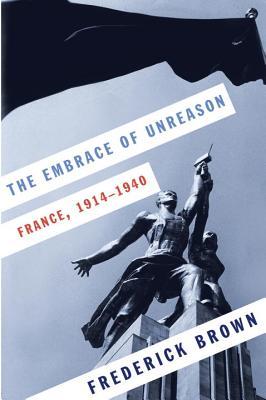After publishing highly acclaimed biographies of Zola and Flaubert, the New York City-based Frederick Brown established himself as an expert on French cultural and intellectual life with his magnificent book For the Soul of France, a saga of the struggle between the militant secularists and the royalist reactionaries between the fall of Napoleon III and the outbreak of World War I. Brown used the Eiffel Tower and the Sacré Cœur Basilica as symbols of the opposing camps, devoting some of the earlier book’s best passages to the construction and criticism of both edifices. For all of Brown’s pro-secularist bias, For the Soul of France was deservedly praised by both John Lukacs and Henry Kissinger.
Brown’s newest book, The Embrace of Unreason, is its sequel, an attempt to formulate a political and cultural history of interwar France by describing the lives and works of several prominent reactionaries. But trouble starts at the beginning, with the choice of Frederick Brown’s antiheroes. The author concentrates on Maurice Barrès, Charles Maurras, and Pierre Drieu La Rochelle.
While an important presence in the anti-Dreyfusard, right-wing intellectual milieu, Barrès died only several years after the end of World War I, and by then his influence was on the wane. Yet while emphasizing Barrès, Brown devotes unpardonably scant attention to the equally fascinating dyed-in-the wool antisemite Xavier Vallat. Even more disappointing is Brown’s treatment of two interwar French intellectuals, Robert Brasillach and Irene Nemirovsky. He barely mentions the former and completely omits the latter.
An even more notable reactionary author and French literary figure, Louis-Ferdinand Céline, gets obscenely little attention from Frederick Brown. A World War I veteran and a physician who traveled the world, Céline, whose rabid antisemitism repelled even the Nazis, became an object of fascination for the Beat movement, with William S. Burroughs and Allen Ginsberg paying him visits.
I believe that the reason for Frederick Brown’s scant treatment of Céline and Brasillach, and his omission of Nemirovsky, is his reluctance to admit that the reactionary and fascist right had a strong attraction for interwar French intellectuals. He obfuscates this uncomfortable fact with endless passages on his heroes. Jean Jaurès’s inclusion in the book is especially questionable, since he was assassinated before the Great War and thus falls squarely outside the period outlined. Brown repeats a detailed account of Jaurès’s campaign against the war and assassination from his previous book, and he exhaustively discusses various attacks, verbal and physical, on another of his heroes, Léon Blum.
While Brown disparages Pierre Drieu La Rochelle’s personal and public lives, he treats André Gide like a secular saint. He handles the Stalinism of Gide with a deferential understanding not granted to the fascism of Drieu. Even more striking is the contrast between Brown’s endless, almost prurient dwelling on the latter’s myriad affairs and his absolute silence regarding the former’s homosexuality. Brown neglects to mention that Gide was, to put it bluntly, a predatory pederast. Hired to tutor young Marc Allégret, Gide, at the age of 47, seduced the 15-year-old boy and fled with him to London. Later, Gide published Corydon, one of the first works of modern homosexual propaganda. Yet Brown, in a jarring display of intellectual dishonesty, portrays Drieu as a syphilitic, seedy cad while presenting the deviant Gide as an intellectual paladin of the interwar left, sans peur et sans reproche.
Unfortunately, the only chapters in Frederick Brown’s book that are worth reading are those that extensively discuss Charles Maurras and Action Française. But even they are insufficient. For a true understanding of Maurras and his impact, I recommend Eugen Weber’s Action Française: Royalism and Reaction in Twentieth Century France and the late Thomas Molnar’s “Charles Maurras, Shaper of an Age” in the Fall 1999 issue of Modern Age.
[The Embrace of Unreason: France, 1914-1940, by Frederick Brown (New York: Random House) 368 pp., $28.95]

Leave a Reply